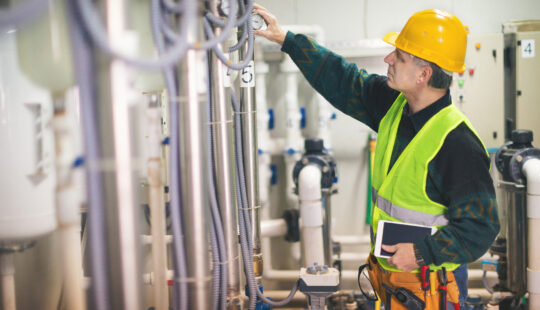A circular packaging future is within our grasp, according to a report prepared by SAP and Accenture and unveiled at the Consumer Goods Forum’s Global Summit in Kyoto, Japan.
But in order to succeed, the leaders of consumer goods (CPG) companies need to undertake five strategic actions, say the report’s authors – Wesley Spindler, Accenture’s global lead for Circular Economy, and E.J. Kenney, SAP’s SVP for the Consumer Products Industry.
“As we approach the midpoint of the Decade of Action, packaging – and in particular plastic packaging – continues to be a priority for consumer goods companies in their efforts to deliver both business and sustainability value,” say the two authors in the introduction to the report. “Packaging ensures safe delivery and consumption of essential products to billions of people every day. However, it has also generated a lot of waste and pollution. If circular packaging solutions do not start to scale, by 2050 there could be more plastic than fish in the ocean.”
They note that CPG packaging is a tremendously difficult problem to solve given the complexity of the packaging value chain and the frequent lack of acknowledgment of a circular business case. Current regulations along with increased stakeholder pressure add urgency and reinforce how interconnected sustainability and business efforts have become.
“Packaging is a waste challenge, a climate challenge, and a human health challenge,” the authors say while noting that the consumer goods industry is currently off track in addressing plastic packaging pollution. Packaging is the biggest contributor to plastic pollution and accounts for nearly 40% of global plastic demand that almost exclusively becomes waste.
Worryingly, they note that plastic commitments are falling flat and, like in most other industries, consumer goods companies lack end-to-end visibility of their packaging supply chain.
Among the European food and drink companies, two-thirds of pledges to go greener on plastic have failed or been dropped. At the same time, the Ellen MacArthur Foundation found that most of the signatory organizations to the UNEP Global Commitment representing 20% of all plastic packaging produced globally will “very likely” not achieve their target of 100% reusable, recyclable, or compostable packaging by 2025, and that collective virgin plastic use of FMCG (fast-moving consumer goods) has also returned to 2018 levels.
But more optimistically they add, “We know that these opportunities are there for consumer goods companies that seize them. There has never been a better time to act – at speed and at scale. […] Drawing on our decades of experience collaborating for the success of our consumer goods clients and deep circular economy expertise, […] we view circular economy as the ‘Swiss Army knife’ of solutions for this challenge, not only supporting better planetary outcomes, but also delivering significant business value.”
The report, discussed by business leaders during the Global Summit, recommends that consumer goods company leaders address these challenges by undertaking five actions. They should embrace authenticity and transparency, reimagine packaging research and development (R&D), invest in infrastructure, expand and explore circular business models, and collaborate to scale.
Specifically, the authors say standardized sustainability reporting on plastics and the regulatory environment makes it impossible for companies to ignore the call to action. But before they can do so meaningfully, companies need to understand their actual impact – and be honest about it. Beyond regulations, to successfully implement a circular economy for plastics, companies must prioritize transparency and use data to authentically measure the real impact of new designs.
“Meaningful action starts with authenticity and transparency to drive credible solutions with tangible impact. We must embrace a collective mindset of learning from each other, sharing what works and what doesn’t,” they say in the report.
In addition, they argue that our approach to design must change if we are to create new value through packaging innovation and move towards a future with less and less packaging. “The future of packaging will extend the product’s definition, where, for example, the packaging itself becomes a part of the product, making choice and design of the related technologies and materials even more critical,” they say.
Reimagining packaging R&D across the value chain through advanced design tools, smart packaging, and material innovation will step us forward. Coordinating investment with downstream stakeholders and expanding reuse and circular business models in a systemic way will foster the ecosystem change we need to see. The nature of this challenge makes a multi-stakeholder approach essential.
But implementing innovative solutions also requires infrastructure and community support. Consumer goods companies have historically left recycling responsibilities to the consumer, but society increasingly expects business to take an active role beyond the design and use of their packaging and to contribute to its collection, reuse, and recycling.
Fortunately, the authors note the business model for circularity is growing stronger as companies step up their innovation and commitment. “Shifting 20% of plastic packaging to a reuse model is in fact a more than US$10 billion business opportunity and represents untapped potential for improving the consumer experience and increasing brand loyalty.”
The report also argues that collaboration is one of the critical and necessary components for circular packaging to gain traction. “Consumer goods companies can join forces with partners across the value chain – such as packaging suppliers, retailers, end consumers, waste managers, and recyclers – to meaningfully advance goals and to unlock shared risk and shared reward.”
Even though consumer goods leaders face a growing mountain of regulatory challenges and complexity, they conclude that it’s clear that progress is possible, saying, “There is a path forward to a sustainable packaging future.”



